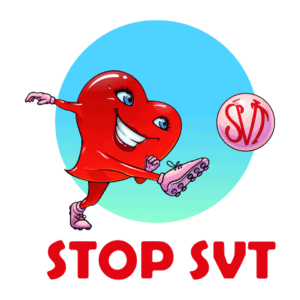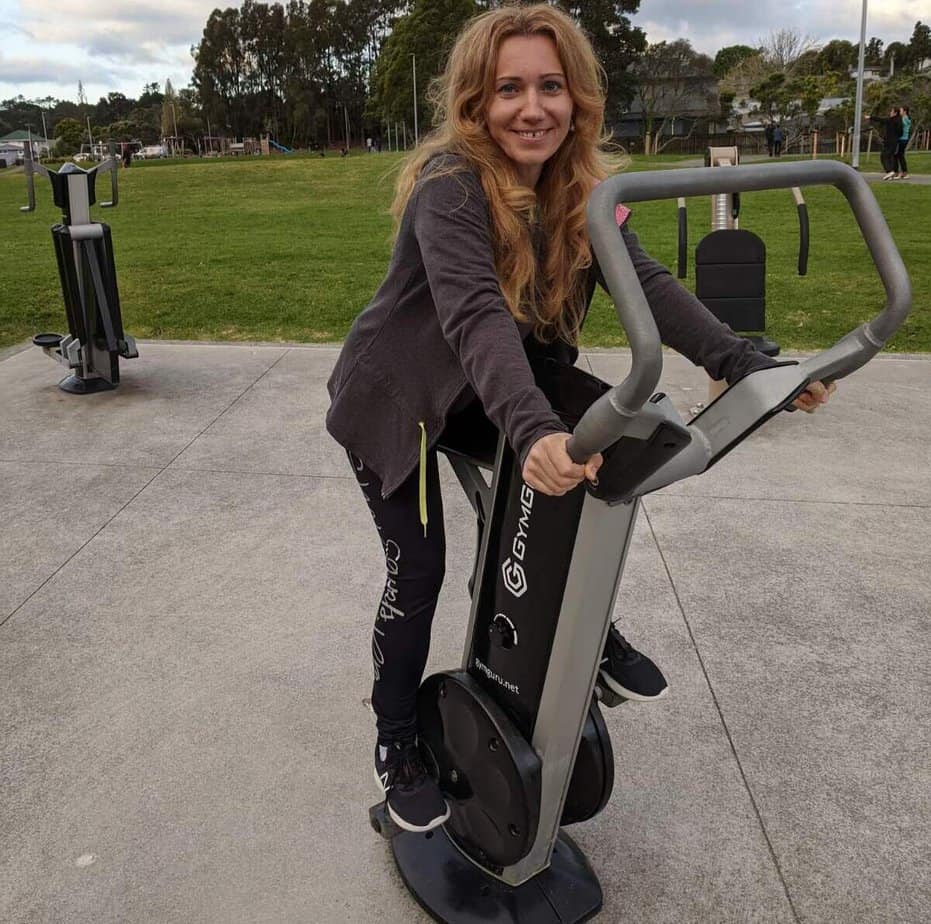Table of Contents
Can you exercise with SVT?
The question about exercising was on my list of inquiries that I wanted answered in my first meeting with the cardiologist.
Realizing how vital exercise is in regulating heart rhythm, I decided to share with you what I discovered about the influence of exercise on the heart in people with supraventricular tachycardia.
Always check with your cardiologist first, but unless you have rare heart disease or a clear contra-indication from your doctor, the general recommendation is to go and exercise. If you have an SVT diagnose, regular exercise will strengthen your heart and lower resting heart rate.
Some people don’t even think of exercising because they worry that an elevated heart rate through physical activity will exacerbate their symptoms.
Doctors try to keep the heart rate low with medication, but choosing not to move will only make things worse. The muscles including the heart become weaker. You will get tired, even doing your daily chores if you choose to live a inactive lifestyle.
For some of us, exercise can be a real challenge, but people are not designed to live a sedentary lifestyle.
“Exercise is an important part of a healthy lifestyle, and most people who have heart rhythm disorders – also known as arrhythmias – should not avoid exercise because of their condition,” Dr. Scott Brancato, says.
The next question that pops up in our mind is:
How can I exercise with SVT?
First of all, ask your cardiologist what exercises are appropriate for you. Work close with your health practitioner to determine your level of fitness and know your limitations if you have any.
However, in general, if you have just started, to be safe and get the most out of it, exercise needs to meet a few conditions:
- it must be done daily,
- in moderation, and
- it must be a low-level exercise that doesn’t exceed 75% of your maximum heart rate.
You should aim for a workout that will give you all the cardiovascular benefits of exercise without exhausting your heart, and this is low-intensity cardio training. It will keep you away from most of the unwanted SVT bouts and, in time, will increase the level of your fitness.
Low-intensity cardio training is exercising at approximately 55% to 75% of your maximum heart rate for more than 10 minutes in a steady and sustained manner. Maximum Heart Rate (MHR) = 220 – your age
This type of training can be:
- walking
- swimming
- cycling
- water aerobics
- nordic walking
- clogging
You can measure the intensity of your workout using your heart rate. You can buy a tracker device or take a pen and paper and learn how to measure and interpret your:
- resting heart rate – the lower it is, the fitter you are
- maximum heart rate – your heart working at its full capacity
- target heart rate for a low-intensity workout – the level of exercise where the heart is conditioned but not overworked
Resting heart rate is measured first thing in the morning after you wake up and shows the number of times the heart beats in one minute.
A normal heart rate ranges between 60 and 100 beats per minute.
How to measure your resting pulse? Do the following steps first thing in the morning before stepping out of bed:
- Position the left hand with an open palm facing upward.
- Put the first and second fingers of your right hand together and press them gently on the spot on your left wrist that is found just below the base of your thumb, between the bone and the tendon.
- Don’t use your thumb as it has its own pulse.
- Don’t press too hard. You may not be able to feel anything because you will reduce the flow of blood through that artery. Remember that you can feel the pulse only because the artery dilates as a result of blood being pumped through it.
- Move your fingers around your wrist until you feel the pulse.
- Using a watch, count the beats for 30 seconds and multiply the number by 2. That value will be your resting pulse rate.
Maximum heart rate (MHR) is the highest heart rate you can reach per minute during intense exercise when the heart is working at its full capacity. According to The American Heart Association (AHA), the formula to determine your MHR is 220 minus your age.
Maximum Heart Rate (MHR) = 220 – your age
For example, if you are 45 years old, you subtract 45 from 220, and you will get a maximum heart rate of 175.
The range of your exercise zone for a low-intensity workout should be within 55% and 75% of your maximum heart rate. This means that your workout should be performed in a range of 96 beats per minute (175 maximum heart rate X 55 %) to 131 beats per minute (175 maximum heart rate X 75%).
This is a safe and comfortable zone to exercise in with a low level of effort while providing many benefits: the level at which the heart is trained, but not subject to exhaustion.
How to be SVT safe when you exercise?
Binge exercising and too much or too little exercise will not have the desired outcome of helping you in the process of healing.
Also, focusing only on strenuous exercise – the one which exceeds 75% of your maximum heart rate – and going harder every time on your training will cause oxidative stress in your body, which leads to chronic inflammation and predisposition to illness.
Three weeks after I came home from hospital with an SVT diagnosis, I went on vacation to Mt Maunganui. We decided to walk up the mountain. It was maybe half an hour to the top and another 30 minutes back.
I had to stop a few times as I was exerting myself to the maximum of my capacity. When we got close to the peak, I remember wondering what I would do if I had an SVT then. How could I get back? I managed to get back safely, but I must say it wasn’t wise of me to walk all the way to the top that day.
Why? Because those days, I wasn’t in the best of health. I had palpitations and my heart skipped beats when I was walking. I felt like my heart was about to start racing again at any moment.
Besides that, I wasn’t fit, and my heart had to work hard for any exercise. Also, I didn’t have a tracker device for my pulse to be able to stay under 75% of my maximum heart rate all the time to be safe.
The idea is we have to observe our bodies, the way we react, and exercise the right way.
Everyone has a different level of fitness. It would help if you had your individualised workout plan to find out where you are at.
Start with small steps like walking.
Set a goal to walk every day for 5 minutes for a week at your lowest target heart rate. After one week, see how you feel and increase your walk to 8 minutes or whatever feels comfortable.
See if you can increase your target heart rate by a few percentages, from 55% to maybe 57%. If not, stay where you are for another week because in time you will build endurance.
You need to be patient and exercise daily at a pace you enjoy with tiny incremental changes in intensity and duration from week to week.
Maybe even walking seems like too much effort for you. In this case, you need to start with a minimum amount of exercise, like stretching, increasing your range of motion, or balancing, and progress from there.
What are the benefits of physical exercise for people with SVT?
Physical inactivity is one of the leading causes of heart disease. Exercise helps preventing cardiovascular illnesses, including arrhythmia.
We know that too much exercise creates stress on the body and being already in a state of stress, we don’t want to add more on.
However, knowing how much your body can handle right now and implementing the right type of exercise, intensity, and duration is the way to go to build up endurance.
Why is exercise indicated if you have SVT?
Regular exercises slow the resting heart rate and the heart rate during peak exercise.
This is what happens when people take medication. They keep their heart rate low all the time to avoid the onset of SVT, but this doesn’t make them healthier.
In comparison, exercise has the same effect as taking a drug but without side effects. The more physically active somebody is, the lower is their risk of heart disease, including arrhythmias.
Exercise improves the heart rate recovery
A good heart rate recovery means that the heart rate will quickly come down to its normal resting value after exercise.
Heart rate recovery is an indicator of the cardiovascular risks and shows how fast the heart rate decreases at two minutes after you have stopped exercising. It shows if you are in a good or bad shape, or if you have a weak heart.
It strengthens the heart
Your heart is a muscle. When you exercise, your heart gets stronger.
Imagine your first day at the gym.
It feels hard to work out with a 3kg dumbbell. You do nine reps, and the 10th is challenging, but after three months of regular exercise, less effort is needed to lift 3kg that when you first started.
Your muscles are (more powerful) stronger now, and your heart is capable of pumping more blood with less effort, which means you can train longer before you get fatigued.
Exercise boosts energy
Exercise produces more ATP molecules, our cellular energy, which are needed to execute any movement.
ATP releases / ATP molecules release the energy that activates muscle contraction. So, any time you miss your coffee because it gives you a boost of false energy, get yourself moving: do some stretching or go for a walk.
Also, during physical activity, our body produces some important neurotransmitters called endorphins which improve mood and induce a state of happiness, making us more energised.


Thanks for your help. I didn’t want to quit exercising, but knew I needed to be smart. My SVT was detected during an unrelated Holter monitor test. I could not believe it. My new Polar Pace Pro also detects the heart rate spikes but smooths them out. Like you said, I need to slow down and progress gradually.